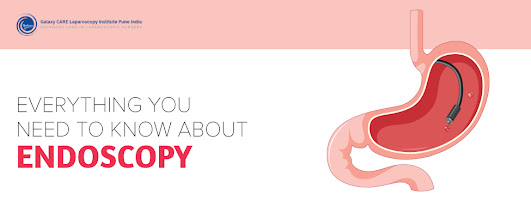EVERYTHING YOU NEED TO KNOW ABOUT ENDOSCOPY
Introduction: Breast cancer remains a significant health concern, affecting millions of lives worldwide. While early detection through screening has improved survival rates, surgical management plays a crucial role in treating breast cancer effectively. In recent years, there have been remarkable advancements in surgical techniques and approaches, enhancing both the oncological outcomes and the quality of life for patients. This blog explores the latest developments in the surgical management of breast cancer, highlighting key procedures and their impact on patient care.
1. Lumpectomy and Mastectomy: Traditional surgical approaches for breast cancer include lumpectomy and mastectomy. Lumpectomy, also known as breast-conserving surgery, involves the removal of the tumor and a small margin of surrounding healthy tissue. Mastectomy, on the other hand, entails the complete removal of the breast tissue. Surgeons determine the most suitable approach based on factors like tumor size, location, and patient preferences.
2. Minimally Invasive Techniques: Advancements in technology have led to the widespread adoption of minimally invasive surgical techniques, such as laparoscopic and robotic-assisted procedures. These approaches offer smaller incisions, reduced scarring, and quicker recovery times compared to traditional open surgeries. Minimally invasive techniques are increasingly utilized in breast cancer surgeries, providing patients with a less invasive and more aesthetically pleasing option.
3. Sentinel Lymph Node Biopsy: Determining the extent of lymph node involvement is crucial in breast cancer staging. Sentinel lymph node biopsy is a surgical technique that allows surgeons to identify and remove a minimal number of lymph nodes most likely to contain cancer cells. This targeted approach reduces the risk of complications associated with traditional lymph node dissections, such as lymphedema.
4. Oncoplastic Surgery: Oncoplastic surgery combines oncologic principles with plastic surgery techniques to achieve optimal cancer removal while preserving the natural appearance of the breast. This approach is particularly beneficial for patients undergoing breast-conserving surgery, as it addresses both the cancer and the cosmetic aspects of the procedure. Oncoplastic surgery aims to enhance patient satisfaction and self-esteem following breast cancer treatment.
5. Nipple-Sparing Mastectomy: In select cases, surgeons may perform a nipple-sparing mastectomy, preserving the nipple and areola during breast tissue removal. This technique offers improved cosmetic outcomes and contributes to the psychological well-being of patients. Nipple-sparing mastectomy is often considered for individuals with early-stage cancer and a low risk of nipple involvement.
6. Adjuvant Therapies and Surgery: Surgery is frequently combined with adjuvant therapies such as chemotherapy, radiation therapy, and hormone therapy to maximize treatment efficacy. The integration of these modalities is carefully tailored to each patient's specific case, contributing to a comprehensive and personalized approach to breast cancer care.
Conclusion: The landscape of surgical management for breast cancer has evolved significantly, reflecting a commitment to improving both survival rates and patients' overall well-being. From minimally invasive techniques to oncoplastic surgery, the options available to individuals facing breast cancer continue to expand. As research and technology advance, the future holds the promise of even more refined and personalized surgical approaches, offering hope for improved outcomes and a higher quality of life for those affected by this prevalent disease.




Comments
Post a Comment